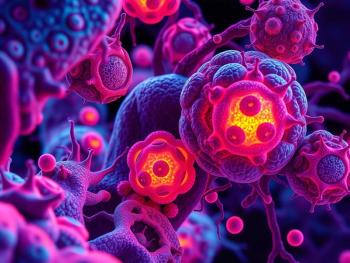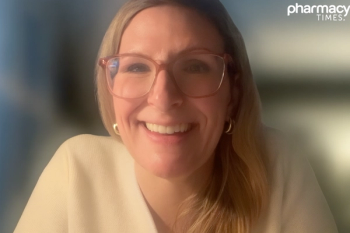
What Does an AML Diagnosis Mean?
James McCloskey, MD, and Danielle Marcotulli, APN, RN, MSN, FNP-BC, AOCNP give a brief synopsis of AML, including its definition, the different types of the condition, and a typical patient’s journey.
Episodes in this series

Ryan Haumschild, PharmD, MS, MBA: Hello, and welcome to this Pharmacy Times® Peer Exchange, “Best Practices in Multidisciplinary Care in AML.” My name is Dr. Ryan Haumschild, Director of Pharmacy at Emory Healthcare and the Winship Cancer Institute, and joining me today in this discussion is Dr. Cole McCoy, oncology clinical pharmacy specialist at Froedtert Medical College of Wisconsin in Milwaukee, Wisconsin; Dr. James McCloskey, Chief Leukemia Division at the John Theurer Cancer Center, Hackensack Meridian Health in Hackensack, New Jersey; and Danielle Marcotulli, [Leukemia Nurse Practitioner] at the John Thoreau Cancer Center, Hackensack Meridian Health in Hackensack New Jersey. Today, we are going to talk about several topics pertaining to AML, including discussions around best practices and care, current treatment trends, and the role of maintenance therapy. Let's get started.
As we begin, let's first hit on the current assessments and key considerations of treatment in AML. As we jump into that, Dr. McCloskey is it possible for you to provide a brief overview of AML, including the different types of AML that many might not be familiar with?
James McCloskey, MD: AML is the most common acute leukemia in adults. The average age of patients diagnosed with this disease is around 68. Leukemia is a cancer of the white blood cells; in acute leukemia we see arrest and maturation, so we have a proliferation of these very immature white blood cells that crowd out all the other myeloid elements in the marrow, so they can't make the blood cells that our patients need. Historically, we've tried to separate AML based on what it looks like under a microscope, and the first classification system that came into use was a French-American-British system that attempts to subdivide AML based on the degree to which it has matured under a microscope. An important one to pull out immediately is APL, or acute promyelocytic leukemia—or M3 as defined by the French-American-British system. Because this subtype of AML is treated very differently, it's characterized by translocations in chromosomes 15 and 17 and is usually treated with some combination of ATRA and chemotherapy or arsenic. AML as we typically define it, though, are all the other subtypes of AML. After the French-American-British system, we moved to the WHO classification system, and that's the one most of us use today. That attempts to subdivide AML primarily based on its morphologic features but also on the cytogenetics and molecular features, in addition to some of the clinical characteristics, which include prior chemotherapy exposure or an antecedent hematologic malignancy. What we typically use are risk-stratification tools like the ELN guidelines or ASH guidelines, which sort of meld those both together, using both morphologic characteristics—cytogenetics and molecular features—to risk-stratify patients and help us plan their treatment.
Ryan Haumschild, PharmD, MS, MBA: Dr. McCloskey, you have a lot of background that goes from chemotherapy to cytogenetics to risk-stratification. Danielle, knowing that you practice a lot with these patients, what's the typical journey for a patient that's been diagnosed with AML?
Danielle Marcotulli, APN, RN, MSN, FNP-BC, AOCNP: They show up to our office, and they've just been diagnosed with AML. Maybe it's on a flow cytometry, or maybe bone marrow biopsy. We're looking at patient’s performance status—how old they are, have they had previous malignancies that could have caused this? We're getting better at monitoring them as an outpatient, so we can wait for some of the cytogenetic and molecular testing to come back and tailor a more appropriate treatment for that person. They typically go in the hospital for an intensive induction, which lasts about 30 days. The goal of that would be to get them into a remission. Then, we would proceed with consolidation, and at that point, it's important to incorporate transplant into your consolidation. Oftentimes, depending on whether they're low or high risk, we're always having those patients meet with [a] transplant [team] if they're a possible candidate. Even if they don't need a transplant, we want to know in the future if they have a donor and how fast we can move. After, if they're not going to transplant, we've considered maintenance therapy as standard of care. That conversation continues, usually using something like Onureg for the maintenance.
Ryan Haumschild, PharmD, MS, MBA: Danielle, thanks for really outlining the journey of the AML patient.
This transcript has been edited for clarity.
Newsletter
Stay informed on drug updates, treatment guidelines, and pharmacy practice trends—subscribe to Pharmacy Times for weekly clinical insights.


















































































































































































































